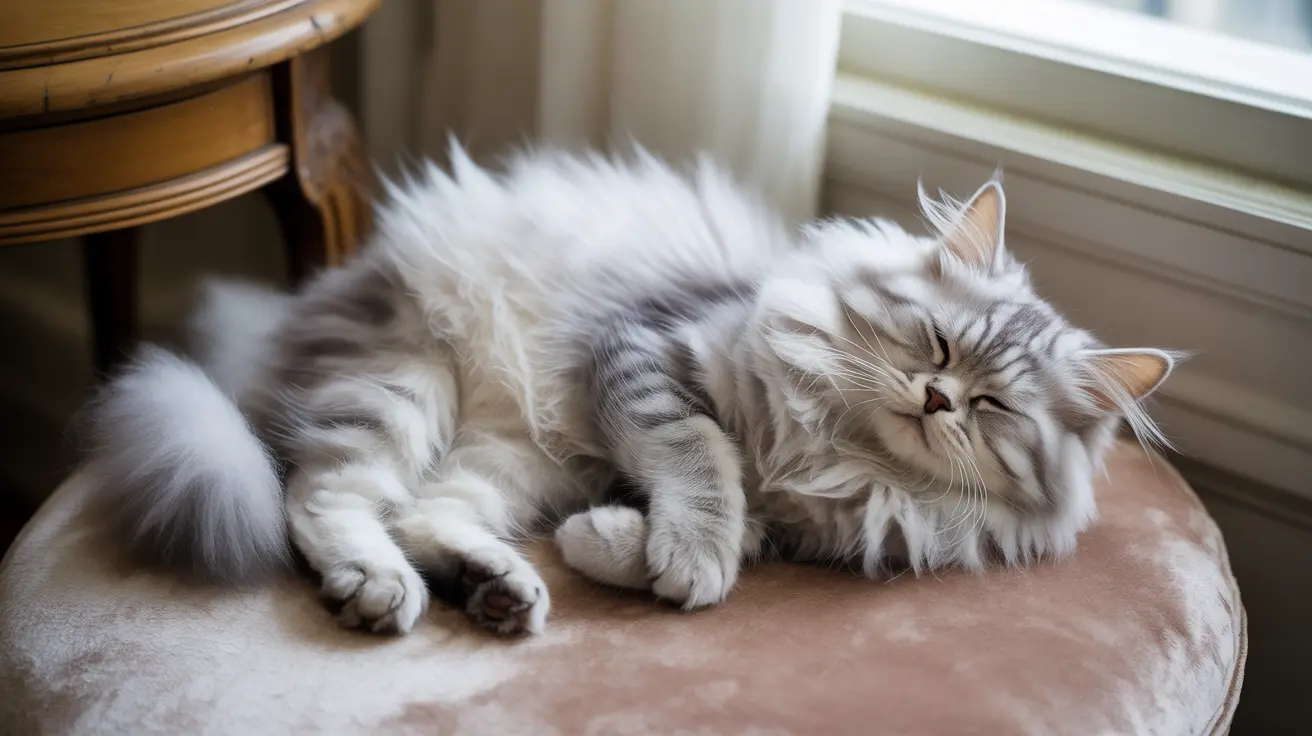If you've ever watched your cat sleeping, you may have noticed them twitching, making small sounds, or even appearing distressed during their slumber. This naturally leads many cat owners to wonder: can cats have nightmares? While the science of feline dreams isn't fully understood, research suggests that cats do experience dreams during sleep, and some evidence indicates they may indeed have nightmares.
Let's explore the fascinating world of feline sleep patterns, dream states, and what science tells us about the possibility of cats experiencing bad dreams. Understanding these aspects can help you better care for your feline friend and know when their sleep behaviors are normal or might need attention.
Understanding Cat Sleep Patterns
Cats are champion sleepers, spending between 12-16 hours per day in various states of slumber. This sleep pattern is polyphasic, meaning they sleep multiple times throughout the day rather than in one long stretch like humans. Their sleep cycles are complex and include both light sleep and deep REM (Rapid Eye Movement) sleep, the stage where dreams occur.
Adult cats typically experience several sleep cycles daily, with each cycle lasting about 20-30 minutes. During these cycles, they transition through different sleep stages, including the crucial REM phase where dreaming takes place.
The Science Behind Cat Dreams
Scientific research, particularly studies conducted since the 1960s, has confirmed that cats experience REM sleep similar to humans. During REM sleep, cats' brains show electrical activity patterns remarkably similar to those observed in human brains during dreaming states.
During REM sleep, you might observe your cat:
- Twitching whiskers and paws
- Making small sounds or vocalizations
- Moving their eyes rapidly under closed lids
- Exhibiting facial expressions
- Flicking their tail
Evidence for Cat Nightmares
While we can't definitively prove that cats experience nightmares in the same way humans do, behavioral observations and scientific understanding of brain activity during sleep suggest it's likely. Cats may process stressful experiences or natural fears during their dream states, potentially leading to what we would consider nightmares.
Signs that might indicate your cat is experiencing a disturbing dream include:
- Sudden jerking movements
- Distressed vocalizations
- Abrupt awakening with signs of anxiety
- Temporary disorientation upon waking
How to Support Your Cat's Healthy Sleep
Creating an environment conducive to restful sleep can help minimize potential sleep disturbances and nightmares in cats. Consider these recommendations:
- Provide a quiet, safe sleeping area
- Maintain consistent daily routines
- Ensure regular exercise and playtime
- Reduce environmental stressors
- Keep feeding schedules regular
When to Seek Veterinary Care
While most sleep behaviors are normal, certain signs warrant professional attention. Contact your veterinarian if you notice:
- Excessive sleep disturbances
- Violent movements during sleep
- Significant changes in sleep patterns
- Persistent signs of distress upon waking
- Unusual daytime lethargy
Frequently Asked Questions
Can cats have nightmares or experience bad dreams like humans do?
Yes, research suggests cats can experience something similar to nightmares during REM sleep. While we can't know exactly what they experience, cats show signs of distress during sleep that indicate they may have disturbing dreams.
What signs show that my cat is dreaming during sleep?
Common signs of dreaming include twitching whiskers, paw movements, tail flicking, rapid eye movements under closed lids, and small vocalizations.
Why does my cat twitch or make noises while sleeping?
These movements and sounds typically occur during REM sleep when cats are actively dreaming. It's normal behavior and often indicates they're processing daily experiences through dreams.
Should I wake my cat if they seem distressed from a nightmare?
It's generally best not to wake a sleeping cat, even if they appear distressed. Sudden awakening can disorient them and potentially lead to defensive reactions. If they wake naturally, offer gentle reassurance.
How much do cats sleep, and does their sleep pattern affect dreaming?
Adult cats sleep 12-16 hours daily, with kittens and senior cats sleeping up to 20 hours. Their polyphasic sleep pattern includes multiple dream cycles throughout the day, with REM sleep occurring regularly during these periods.






